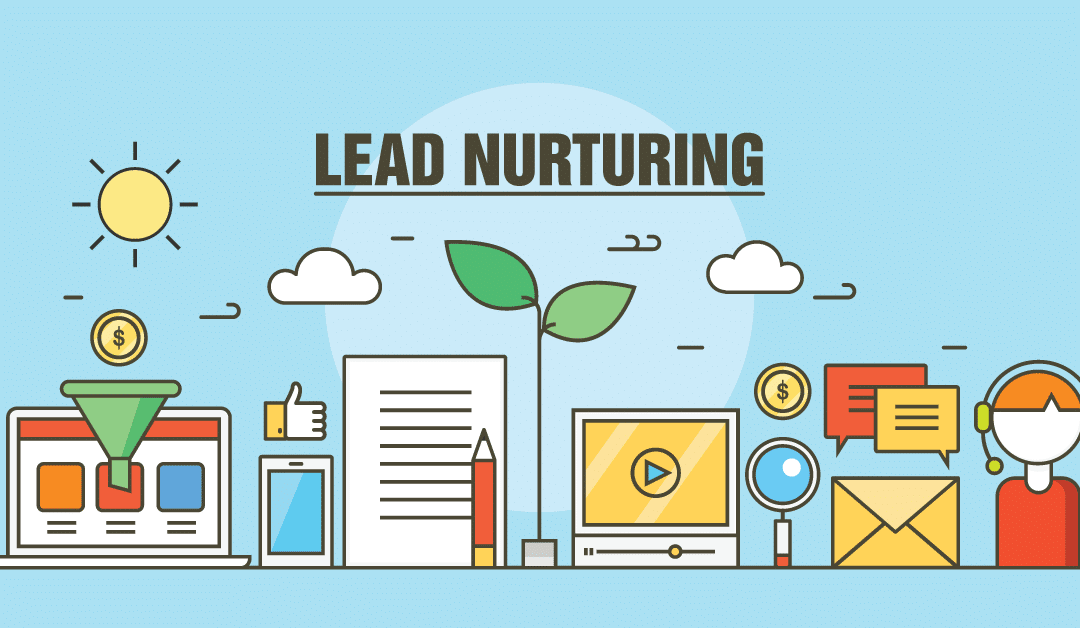
The Ultimate List of B2B Marketing Automation Tools for 2023
September 19, 2025
AI Marketing Chatbots: Changing the Game and How to Adapt
September 19, 2025Understanding the Significance of Lead Qualification in B2B
In the intricate world of B2B lead generation, lead qualification emerges as a pivotal linchpin, defining the success and efficiency of your sales endeavors. Imagine casting a wide net into the vast sea of potential clients without any filtration. Your resources would quickly deplete, and your results would be meager at best. This is where lead qualification steps in as the guiding star, ensuring you invest your time and energy in the right places.
- The Filter in the Sales Funnel: Lead qualification serves as the filter in your B2B sales funnel. It’s the process that separates those who express a modicum of interest in your product or service from those who are genuinely primed to convert into paying customers. Not all leads are created equal, and not all are ready to make a purchase. Lead qualification discerns the nuances between these categories and guides your sales and marketing teams in their approach.
- The Ultimate Goal: Conversion: The ultimate goal of B2B lead generation is conversion. You want those leads to evolve from initial inquiries into loyal customers. Lead qualification ensures that the leads handed off to your sales team are not only interested in what you offer but also more likely to make a purchase. This not only boosts conversion rates but also optimizes your sales team’s productivity, as they focus their efforts on the most promising leads.
- A Smoother Sales Journey: Picture your B2B sales journey as a scenic road trip. Without lead qualification, it’s like embarking on this journey without a roadmap, GPS, or any sense of direction. You may still reach your destination, but the journey will be riddled with wrong turns, U-turns, and unnecessary detours. On the other hand, with lead qualification, you equip your team with the navigation tools to ensure a smoother, more direct path to successful conversions.
- The Cost-Efficiency Factor: In the business world, time is money. Pursuing unqualified leads not only consumes your team’s valuable time but also incurs additional costs in marketing efforts. The leads who are not a good fit for your product or service may never convert, which means your resources are wasted. Lead qualification acts as a cost-efficient gatekeeper, allowing you to allocate your resources where they matter most.
The Basics of Lead Qualification
Before we delve into the intricate aspects of lead qualification, let’s ensure we have a solid grasp of the fundamentals. At its core, lead qualification involves two essential components: fit and engagement.
- Fit: Does the Lead Match Your Ideal Customer Profile (ICP)?: Fit relates to whether a lead’s characteristics align with your Ideal Customer Profile (ICP). The ICP represents your target market and includes attributes like industry, company size, location, and other demographic factors. A lead that fits your ICP is more likely to benefit from your product or service. Fit helps you gauge if the lead is in the right ballpark.
- Engagement: Is the Lead Ready to Engage?: Engagement measures the lead’s readiness to engage with your sales team. It takes into account their actions and interactions with your brand. This includes responses to emails, visits to your website, downloads of your content, and more. Engaged leads are actively exploring their options and are more likely to be receptive to your sales efforts.
In summary, lead qualification is the art of determining if a lead fits your ICP and is engaged enough to move along the sales pipeline. It’s a fundamental step that lays the foundation for a successful B2B sales journey, optimizing your resources, and improving your chances of conversion.

Identifying Your Target Audience
Defining Your Ideal Customer Profile
Defining your Ideal Customer Profile (ICP) is a foundational step in B2B lead qualification. Your ICP is essentially a detailed description of the companies that are most likely to benefit from your product or service. Think of it as creating a sketch of your perfect customer.
Building the ICP Blueprint
Creating an ICP involves research and analysis. Start by examining your existing customer base. What characteristics do your most valuable customers share? Consider factors such as:
-
Industry: Which industries are most receptive to your offering?
-
Company Size: Are small, medium, or large enterprises your ideal clients?
-
Location: Does your product or service have geographic preferences?
-
Budget: What budget range do your customers typically fall within?
-
Needs and Pain Points: What specific problems does your product or service solve?
Once you’ve gathered this information, you can create a blueprint of your ICP. This will serve as your guiding light, ensuring your lead qualification efforts are always directed towards companies that closely match this profile.
The Power of Precision
The benefits of a well-defined ICP are numerous. It allows you to concentrate your resources on leads that have a higher likelihood of converting. When you know exactly what your ideal customer looks like, your marketing and sales teams can work in unison to target the right audience. It also streamlines your content creation efforts, ensuring that the material you produce resonates with your target market.
But remember, your ICP isn’t a static document. It should evolve as your business grows and as you gather more data about your customers. Regularly revisiting and refining your ICP is crucial to maintaining its relevance.
Leveraging Buyer Personas for Precision
While your ICP paints a broad picture of your ideal customer at the company level, buyer personas zoom in to the individual level. A buyer persona represents a semi-fictional character that embodies the characteristics and behaviors of your ideal customer. Creating buyer personas can add another layer of precision to your lead qualification process.
Crafting Detailed Personas
Building buyer personas involves delving into the specifics of your audience, particularly the individuals within your target organizations. Here are some key components of a buyer persona:
-
Name and Title: Give your persona a name and assign them a job title that reflects their role in the decision-making process.
-
Responsibilities: Describe the tasks and responsibilities of your persona within their organization.
-
Goals: What are their professional goals, and how does your product or service help them achieve these goals?
-
Challenges: Identify the pain points and challenges your persona faces that your offering can address.
-
Communication Preferences: How does your persona prefer to receive information? Do they rely on email, social media, or other channels?
-
Buying Motivations: What drives your persona’s buying decisions? Is it cost savings, efficiency, or other factors?
Creating buyer personas adds a human touch to your lead qualification efforts. It helps your team relate to your potential customers on a more personal level, tailoring their interactions and messages accordingly.
In conclusion, identifying your target audience through a well-defined ICP and detailed buyer personas is the compass that guides your lead qualification journey. It’s the roadmap that ensures you’re headed in the right direction, towards leads that have a higher probability of becoming satisfied customers.

Data-Driven Approach to Lead Scoring
Scoring Criteria and Weightage
Lead scoring is the backbone of effective lead qualification in the B2B realm. It’s the numerical system that helps you prioritize leads based on their fit and engagement. However, to effectively utilize lead scoring, you need to establish clear scoring criteria and assign appropriate weightage.
Scoring Criteria: The Building Blocks
To construct effective scoring criteria, you need to break down the essential components of a lead’s qualification. Here are some key criteria commonly used:
-
Demographic Information: This can include company size, industry, and location. Leads that closely match your ICP in these areas may receive higher scores.
-
Engagement Metrics: How often a lead interacts with your content, such as opening emails, clicking on links, or attending webinars. These actions indicate a higher level of interest.
-
Website Behavior: Monitoring which pages the lead visits on your website and how much time they spend there. Pages related to pricing and product features may carry more weight.
-
Lead Source: The channel through which the lead was acquired. A lead from a highly targeted campaign might receive a higher score.
-
Job Title and Role: Is the lead in a decision-making role within their organization? This can be a critical factor in B2B sales.
Weightage: Assigning Importance
Not all criteria are created equal. Assigning weightage to each criterion helps you reflect their relative importance in your lead qualification process. For instance, if company size is a crucial factor for your business, you may assign it a higher weightage compared to something like the number of email opens.
The assignment of weightage is a subjective process that should align with your specific business goals and the nature of your product or service. It’s essential to regularly review and adjust these weightages as your business evolves and your understanding of your target market deepens.
Automating the Lead Scoring Process
In today’s fast-paced B2B environment, manual lead scoring can be a cumbersome and time-consuming task. The volume of data and leads generated can be overwhelming, making it challenging to score them accurately and promptly. This is where automation plays a crucial role in your lead qualification efforts.
- Real-Time Scoring: Automated lead scoring systems work in real-time, constantly evaluating leads based on the established criteria and weightage. This means your sales team always has access to the most up-to-date information about lead quality. As a lead interacts with your content or takes specific actions, their score is adjusted accordingly.
- Marketing Automation Tools: Marketing automation platforms often come equipped with lead scoring capabilities. These tools integrate seamlessly with your CRM system, allowing for a streamlined lead qualification process. The system calculates scores, and when a lead reaches a predefined threshold, it can trigger actions such as lead assignment to a sales representative.
- Efficiency and Consistency: Automation eliminates the potential for human error in scoring leads and ensures that every lead is evaluated consistently. It also frees up your sales and marketing teams to focus on higher-level tasks, such as strategy and engagement, rather than manual data entry.
In conclusion, a data-driven approach to lead scoring is essential for efficient lead qualification. By establishing clear scoring criteria and weightage and implementing automation, you can ensure that your sales and marketing teams are always working with the most relevant and up-to-date lead data.

Effective Lead Nurturing Strategies
Tailoring Content to Lead Stages
Lead qualification doesn’t end with scoring; it also involves nurturing. The goal of lead nurturing is to move leads through the sales funnel by providing them with the right content at the right time. To do this effectively, you need to tailor your content to the specific stage of the lead’s journey.
- Early-Stage Leads: Early-stage leads are just beginning to explore their challenges and potential solutions. At this point, they’re not necessarily looking for your product or service. To engage them, provide educational content that addresses their pain points. Blog posts, ebooks, and webinars that offer valuable insights and solutions can capture their attention.
- Middle-Stage Leads: As leads progress in their journey, they become more interested in potential solutions. For middle-stage leads, content that compares various solutions or provides case studies illustrating successful outcomes can be highly effective. Consider offering product demonstrations or free trials to give them a taste of what you offer.
- Late-Stage Leads: Late-stage leads are ready to make a decision. They want detailed information about your product or service, pricing, and contract terms. Content at this stage can include product specifications, pricing guides, and customer testimonials.
Leveraging Multi-Channel Engagement
In the modern B2B landscape, there’s no one-size-fits-all approach to communication. Different leads have different communication preferences. This is where multi-channel engagement comes into play.
- Email Marketing: Email remains a powerful tool for B2B lead nurturing. You can segment your email list to send personalized messages and relevant content to different lead segments. Automated email workflows can be triggered based on lead behavior, ensuring that they receive the right content at the right time.
- Social Media: Many B2B professionals use social media platforms like LinkedIn to research products and services. Sharing your content on social media can help you reach a wider audience and engage with leads where they spend their time.
- Webinars and Events: Webinars and virtual events offer a highly engaging platform to showcase your expertise and provide valuable insights. They also allow for real-time interaction with leads, making it a dynamic channel for nurturing.
- Content Marketing: Quality content is the backbone of lead nurturing. Regularly publishing blog posts, whitepapers, ebooks, and other resources that address the needs of your target audience keeps your brand top-of-mind and positions you as an industry authority.
In summary, effective lead nurturing involves delivering the right content at the right time, tailored to the lead’s stage in their buying journey. It also means engaging leads through multiple channels to accommodate their diverse preferences.

The Role of Sales and Marketing Alignment
Breaking Down Silos for Improved Collaboration
In many organizations, the misalignment between the sales and marketing departments is a common challenge. These two teams often work in isolation, with minimal communication. However, this misalignment can significantly impact lead qualification and the overall success of B2B lead generation.
- Shared Goals: To improve alignment, both teams need to work toward shared goals. These goals might include a target number of qualified leads, specific conversion rates, or other KPIs that both sales and marketing agree on.
- Communication: Open and continuous communication between sales and marketing is crucial. Regular meetings to discuss lead quality and feedback loops are essential. By sharing insights and information, both teams can make necessary adjustments to improve the lead qualification process.
- Service Level Agreement (SLA): An effective way to formalize the relationship between sales and marketing is by establishing a Service Level Agreement (SLA). This document outlines the responsibilities and expectations of both teams. It can include guidelines on lead handoff, lead scoring, and follow-up procedures.
Feedback Loops for Continuous Improvement
A feedback loop is the mechanism by which information about the results of an action is used to further improve that action. In the context of lead qualification, feedback loops are vital for identifying areas that need improvement.
- Regular Reviews: Sales and marketing teams should regularly review the quality of leads that are being passed from marketing to sales. This review process can identify patterns and trends that highlight areas for improvement in lead qualification criteria.
- Adjustments and Refinements: Based on the feedback and insights gained from these reviews, adjustments can be made to lead scoring, personas, and qualification criteria. These refinements should be an ongoing process, allowing your lead qualification strategy to adapt to changing market conditions and customer behaviors.
In conclusion, the alignment between sales and marketing is fundamental to the success of your lead qualification efforts. Open communication, shared goals, and feedback loops ensure that both teams are on the same page, working collaboratively toward common objectives.

Tools and Technologies for Streamlined Lead Qualification
CRM Systems and Their Impact
Customer Relationship Management (CRM) systems play a central role in lead qualification. These platforms are designed to help businesses manage interactions with current and potential customers, making them indispensable tools in the B2B lead generation process.
- Centralized Data: CRM systems provide a centralized repository for lead and customer data. This data includes contact information, lead behavior, communication history, and more. Having this information readily accessible is essential for effective lead qualification.
- Lead Scoring: Most modern CRM systems offer lead scoring capabilities. This feature allows you to automate the lead scoring process, ensuring that leads are assessed accurately and consistently.
- Workflow Automation: CRM systems can automate various workflows in your lead qualification process. For example, they can trigger notifications and assignments when a lead reaches a certain score, or automatically send follow-up emails based on lead behavior.
Emerging Technologies in B2B Lead Qualification
The B2B lead qualification landscape is constantly evolving, thanks to emerging technologies that offer innovative ways to improve the process.
- Artificial Intelligence (AI): AI is becoming a game-changer in lead qualification. Machine learning algorithms can analyze vast amounts of data to identify patterns and predict lead behavior. This predictive modeling helps in identifying high-quality leads more accurately.
- Chatbots: Chatbots have grown in popularity as a means of engaging with website visitors and capturing lead information. They can answer questions, gather data, and provide a seamless experience for potential customers.
- Predictive Analytics: Predictive analytics uses historical data and statistical algorithms to forecast future trends and behaviors. In the context of lead qualification, it can help identify leads that are more likely to convert into customers.
- Data Enrichment: Data enrichment tools can augment your lead data with additional information from external sources. This can include company details, social profiles, and more, providing a richer context for lead qualification.
In summary, tools like CRM systems and emerging technologies such as AI and chatbots are invaluable in streamlining the lead qualification process. They enable businesses to work more efficiently, ensure data accuracy, and leverage advanced analytics for more precise lead scoring.

Measuring Success and Ongoing Optimization
Key Metrics and KPIs for Lead Qualification
Measuring success in lead qualification involves tracking specific Key Performance Indicators (KPIs). These metrics provide valuable insights into the effectiveness of your lead qualification process.
- Conversion Rates: Conversion rates are a core KPI for lead qualification. They indicate how many of your leads progressed to become paying customers. By tracking conversion rates, you can assess the quality of leads you’re passing to your sales team.
- Sales-Accepted Leads: This metric measures how many of the leads generated by marketing are deemed suitable for the sales team. A high number of sales-accepted leads indicates effective lead qualification.
- Time-to-Conversion: Time-to-conversion measures how long it takes for a lead to move through the sales funnel and become a customer. Shortening this time frame can significantly impact your revenue and sales efficiency.
- Lead Quality: Assessing the quality of your leads is essential. Are they a good fit for your product or service? Do they meet your ICP criteria? Regularly reviewing and adjusting your scoring criteria can improve lead quality.
- Cost Per Qualified Lead: This metric calculates the cost of acquiring a qualified lead. Lowering this cost while maintaining lead quality is a primary goal in B2B lead qualification.
Continuous Improvement Strategies
Lead qualification is not a one-and-done process. It should evolve and adapt to changing market conditions, customer behavior, and business goals. To ensure your lead qualification process remains effective, consider the following strategies:
- A/B Testing: A/B testing involves creating two or more variations of a lead qualification process and comparing their performance. This allows you to identify the most effective strategies and refine your approach.
- Feedback Analysis: Collect feedback from both your sales and marketing teams regarding lead quality and conversion rates. Their insights can highlight areas for improvement and guide refinements in your qualification criteria.
- Regular Data Analysis: Continuously analyze your lead qualification data. Look for trends and patterns that can inform your lead scoring criteria and qualification processes.
- Competitive Analysis: Keep an eye on what your competitors are doing in terms of lead qualification. Analyze their strategies and adapt your own accordingly.
In conclusion, measuring success in lead qualification is essential for optimizing your B2B lead generation efforts. By tracking key metrics and implementing continuous improvement strategies, you can refine your qualification process to achieve better results.


